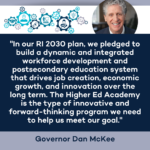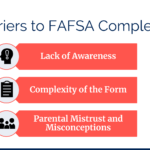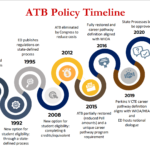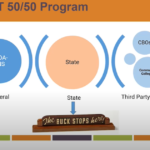
Postsecondary Education
Postsecondary education is more important to states than ever before. Within the next decade, nearly two-thirds of the jobs in the U.S. will require some form of college credential. To meet that demand, states must lead efforts to graduate more students from high-quality certificate and degree programs with the resources available.
The NGA Center’s Postsecondary team supports the development and implementation of strategies that activate state policy levers and leverage state resources for educational attainment and career development after high school. This includes short-term/industry credentials, apprenticeship pathways, degree completion efforts, skills-based training, and modernizing state data systems to meet the needs of evolving industry sectors. The team works to create and execute state-focused, high-quality technical assistance and peer learning opportunities to support Governors’ offices in maximizing the impact and effectiveness of their current postsecondary systems while exploring opportunities for innovation.
Meet the team
- Amanda Winters, Program Director
- Portia Pratt, Senior Policy Analyst
- Abigail Rhim, Policy Analyst
NGA Resources

Governors Leading on Improving College Completion

Skills-Driven State Community of Practice

Next Generation of the Healthcare Workforce Project

Pre-Apprenticeship Action Lab

Governors Leading on Supporting Student Loan Borrowers

States Collaborate to Combat Health Worker Shortage

Postsecondary Education In 2022 State Of The State Addresses

FAFSA Completion Action Lab

The Key Role of Community Colleges in Scaling Apprenticeship Programs Statewide

Ability to Benefit Action Lab

SNAP E&T Action Lab

